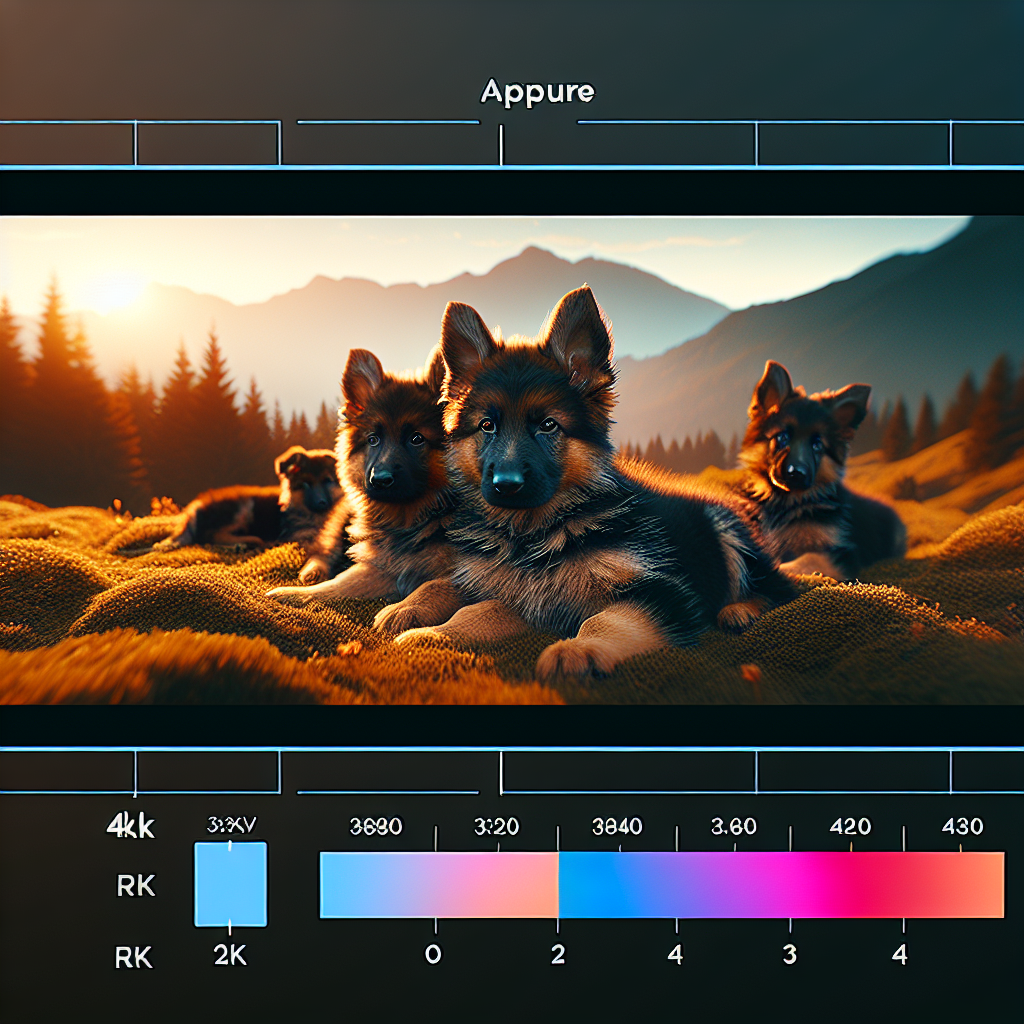Do you believe Dogs Smile ?

Do you believe Dogs Smile ?
-
Table of Contents
- Introduction
- The Science Behind Dog Smiles: Fact or Fiction?
- Decoding Dog Facial Expressions: Can Dogs Really Smile?
- The Psychology of Dog Smiles: Understanding Canine Emotions
- Capturing the Perfect Dog Smile: Tips for Photographing Happy Pooches
- Do Dogs Smile for Real? Exploring the Debate and Different Perspectives
- Conclusion
Introduction
Introduction:
The question of whether dogs smile is a topic that has sparked curiosity and debate among dog owners and animal behavior experts. While humans often interpret certain facial expressions in dogs as smiles, it is important to understand the underlying reasons behind these expressions. In this article, we will explore the concept of dogs smiling and examine the scientific understanding of their facial expressions.
The Science Behind Dog Smiles: Fact or Fiction?
Do you believe dogs smile? It’s a question that has sparked much debate among dog owners and researchers alike. Some people swear that their furry friends can indeed smile, while others dismiss it as nothing more than wishful thinking. But what does the science say? Is there any truth to the idea that dogs can express happiness through a smile?
To answer this question, we need to understand the science behind dog smiles. Dogs, like humans, have a complex range of facial expressions that they use to communicate with us and each other. These expressions can convey a wide range of emotions, from joy and excitement to fear and aggression. But do these expressions actually indicate that a dog is smiling?
One of the key factors in determining whether a dog is smiling is the position of their mouth and lips. When a dog is relaxed and content, their mouth is often slightly open, with their lips pulled back in what appears to be a smile. This expression is often accompanied by a wagging tail and a relaxed body posture, which further indicates that the dog is happy.
But is this really a smile, or just a coincidence? Some researchers argue that dogs don’t actually smile in the same way that humans do. They suggest that what we interpret as a smile is simply a result of the dog’s anatomy and the way their facial muscles are structured. According to this theory, dogs may not be consciously expressing happiness when they appear to be smiling.
However, other researchers believe that dogs do indeed smile, albeit in a different way than humans. They argue that dogs have evolved to communicate with humans, and that their facial expressions have adapted to mimic our own. This theory suggests that when a dog appears to be smiling, they are actually trying to convey happiness or affection to their human companions.
So, who is right? The truth is, we may never know for sure. While there is evidence to support both sides of the argument, the science behind dog smiles is still not fully understood. It’s possible that dogs do smile, but in a way that is different from how humans smile. Or, it could be that what we interpret as a smile is simply a result of our own desire to see our dogs as happy and content.
Regardless of the scientific debate, one thing is clear: dogs are incredibly perceptive creatures. They can sense our emotions and respond to them in ways that often seem uncanny. Whether or not they are actually smiling, there’s no denying that dogs have a unique ability to bring joy and happiness into our lives.
So, the next time you see your dog with their mouth slightly open and their lips pulled back, take a moment to appreciate the happiness they bring you. Whether it’s a smile or not, their love and companionship are priceless. And in the end, that’s all that really matters.
Decoding Dog Facial Expressions: Can Dogs Really Smile?
Do you believe dogs smile? It’s a question that has sparked much debate among dog owners and researchers alike. While it may be tempting to anthropomorphize our furry friends and attribute human emotions to them, the truth is that dogs have their own unique ways of expressing themselves. One of these ways is through their facial expressions.
Decoding dog facial expressions can be a challenging task, but it is one that researchers have been studying for years. One of the most common expressions that dog owners often interpret as a smile is the “submissive grin.” This is when a dog pulls back its lips to reveal its front teeth in what appears to be a smile. However, this expression is not actually a sign of happiness or joy. In fact, it is a submissive gesture that dogs use to show deference to more dominant individuals or to signal that they are not a threat.
Another expression that is often mistaken for a smile is the “play face.” This is when a dog opens its mouth slightly and exposes its tongue while wagging its tail. While this expression may look like a smile to us, it is actually a sign of excitement and anticipation. Dogs use this expression to communicate their desire to play and engage in social interaction.
So, if dogs don’t actually smile, how can we tell if they are happy? One way to gauge a dog’s emotional state is by looking at its overall body language. A happy dog will have a relaxed body posture, with its tail wagging gently and its ears in a neutral position. Its eyes will be bright and alert, and it may even give off a contented sigh. On the other hand, a stressed or anxious dog may exhibit signs such as a tucked tail, flattened ears, and a tense body posture.
It’s important to remember that each dog is an individual and may have its own unique way of expressing itself. Some dogs may be more expressive than others, while some may be more stoic and reserved. It’s also worth noting that a dog’s facial expressions can vary depending on its breed and individual personality.
While dogs may not smile in the same way that humans do, they are certainly capable of experiencing joy and happiness. They may wag their tails, jump up and down, or even give us a playful nudge to show their excitement. It’s up to us as dog owners to learn how to interpret and understand their unique ways of communicating.
In conclusion, while dogs may not smile in the same way that humans do, they do have their own ways of expressing happiness and joy. Decoding dog facial expressions can be a challenging task, but by paying attention to their overall body language and behavior, we can gain a better understanding of how they are feeling. So, the next time you see your dog with what appears to be a smile on its face, remember that it may not be a smile in the traditional sense, but rather a unique expression of their own.
The Psychology of Dog Smiles: Understanding Canine Emotions

Do you believe dogs smile? It’s a question that has sparked much debate among dog owners and researchers alike. While it may be tempting to anthropomorphize our furry friends and attribute human emotions to them, the truth is that dogs do not smile in the same way that humans do. However, this does not mean that dogs are devoid of emotions or incapable of expressing happiness.
To understand the psychology of dog smiles, it is important to first delve into the world of canine emotions. Dogs, like humans, experience a wide range of emotions, including joy, fear, anger, and sadness. These emotions are often communicated through body language, vocalizations, and facial expressions. While dogs may not smile in the traditional sense, they do have their own unique ways of expressing happiness.
One of the most common ways that dogs express happiness is through their wagging tails. When a dog is happy, its tail will wag vigorously from side to side. This wagging motion is a clear indication that the dog is experiencing positive emotions. In addition to tail wagging, dogs may also exhibit other signs of happiness, such as relaxed body posture, a relaxed mouth, and bright, alert eyes.
While dogs may not smile with their mouths in the same way that humans do, they can still display a relaxed, open-mouthed expression that is often interpreted as a smile. This expression is known as a “submissive grin” and is typically seen when a dog is feeling content and relaxed. The submissive grin is characterized by a slightly open mouth, with the corners of the lips pulled back to reveal the dog’s teeth. This expression is often accompanied by soft, relaxed eyes and a wagging tail.
It is important to note that not all dogs will display a submissive grin, and some may have different ways of expressing happiness. For example, some dogs may pant heavily when they are happy, while others may jump and playfully bark. Each dog is unique and may have its own individual way of expressing happiness.
Understanding canine emotions and expressions is not only important for dog owners, but also for professionals who work with dogs, such as veterinarians and dog trainers. By being able to recognize and interpret a dog’s emotions, these professionals can better understand the needs and well-being of the animals in their care.
In conclusion, while dogs may not smile in the same way that humans do, they do have their own unique ways of expressing happiness. From wagging tails to relaxed body postures and open-mouthed expressions, dogs have a variety of ways to communicate their positive emotions. By understanding and recognizing these expressions, we can better understand our furry friends and provide them with the care and attention they need. So, the next time you see your dog with a relaxed, open-mouthed expression, remember that it’s their way of saying, “I’m happy!”
Capturing the Perfect Dog Smile: Tips for Photographing Happy Pooches
Do you believe dogs smile? Many dog owners would argue that their furry friends do indeed smile. Whether it’s a wagging tail, a playful expression, or a happy pant, dogs have a way of showing their joy that can be interpreted as a smile. Capturing this smile on camera can be a challenge, but with a few tips and tricks, you can take stunning photographs of your happy pooch.
First and foremost, it’s important to create a comfortable and relaxed environment for your dog. Dogs are highly perceptive animals and can easily pick up on your energy. If you’re stressed or anxious, your dog will likely feel the same way. Find a quiet and familiar location where your dog feels at ease, whether it’s in your backyard or a nearby park. This will help your dog feel more comfortable and increase the chances of capturing a genuine smile.
Lighting is another crucial factor in capturing the perfect dog smile. Natural light is always the best option, as it brings out the true colors and details in your dog’s fur. Avoid using flash, as it can startle your dog and create harsh shadows. Instead, choose a time of day when the lighting is soft and diffused, such as early morning or late afternoon. This will give your photographs a warm and inviting feel, enhancing your dog’s smile.
When it comes to composition, consider getting down to your dog’s level. This will allow you to capture their expressions from a more intimate perspective. Experiment with different angles and distances to find the most flattering shot. Remember, the goal is to capture your dog’s smile, so focus on their face and try to eliminate any distractions in the background. A simple and clean composition will draw attention to your dog’s joyful expression.
Patience is key when photographing dogs. They are not always cooperative models and may get easily distracted. Take your time and allow your dog to relax before starting the photoshoot. Use treats or toys to grab their attention and keep them engaged. Be prepared to take multiple shots to ensure you capture the perfect smile. Remember, the more relaxed and comfortable your dog feels, the more likely they are to show their true happiness.
Post-processing can also play a role in enhancing your dog’s smile. Basic adjustments such as cropping, exposure, and contrast can help bring out the details in your photographs. However, be careful not to over-edit, as it can make your dog’s smile appear unnatural. The goal is to enhance the natural beauty of your dog, not to completely alter their appearance.
In conclusion, dogs do indeed smile, and capturing this smile on camera can be a rewarding experience. By creating a comfortable environment, using natural lighting, and practicing patience, you can take stunning photographs of your happy pooch. Remember to focus on your dog’s face, experiment with different angles, and eliminate distractions in the background. With a little practice and a lot of love, you can capture the perfect dog smile that will bring joy to your heart for years to come.
Do Dogs Smile for Real? Exploring the Debate and Different Perspectives
Do you believe dogs smile? It’s a question that has sparked a debate among dog owners and experts alike. Some argue that dogs do indeed smile, while others believe that it is simply a human interpretation of their facial expressions. In this article, we will explore the different perspectives on this topic and delve into the science behind dog behavior.
One school of thought suggests that dogs do smile, but their smiles are different from those of humans. According to this perspective, a dog’s smile is not an expression of happiness or joy, but rather a submissive gesture. It is believed that when a dog bares its teeth and pulls back its lips, it is showing deference to a dominant individual or trying to appease a potential threat. This interpretation is supported by studies that have shown that dogs often exhibit this behavior when they are in the presence of a more dominant dog or human.
On the other hand, there are those who argue that dogs do not smile at all. They believe that the human interpretation of a dog’s facial expressions is simply a projection of our own emotions onto them. According to this perspective, a dog’s facial expressions are purely instinctual and serve as a means of communication rather than an expression of emotion. For example, a dog may raise its eyebrows or wrinkle its forehead to signal confusion or uncertainty, not because it is smiling.
To further complicate matters, there is also the issue of anthropomorphism. This is the tendency to attribute human characteristics, such as emotions and intentions, to non-human entities. Many dog owners are guilty of anthropomorphizing their pets, interpreting their behaviors and expressions through a human lens. This can lead to misunderstandings and misinterpretations of a dog’s true emotions and intentions.
So, what does the science say about dogs and their smiles? Research has shown that dogs are capable of experiencing a range of emotions, including happiness, fear, and anxiety. They have the ability to express these emotions through their body language and facial expressions. However, whether or not these expressions can be considered smiles is still up for debate.
One study conducted by researchers at the University of Portsmouth in the United Kingdom found that dogs are more likely to show a “smile-like” expression when they are in the presence of their owners. The researchers observed that dogs would raise their eyebrows, pull back their lips, and wag their tails when their owners approached them. This behavior was interpreted as a sign of happiness and excitement, similar to a human smile.
On the other hand, a study published in the journal Animal Cognition found that dogs do not show a consistent “smile-like” expression when they are happy. The researchers observed that dogs would often exhibit a wide range of facial expressions, including bared teeth, wrinkled foreheads, and raised eyebrows, when they were in various emotional states. This suggests that a dog’s facial expressions are not necessarily indicative of their emotional state.
In conclusion, the debate over whether or not dogs smile is far from settled. While some argue that dogs do indeed smile, others believe that it is simply a human interpretation of their facial expressions. The science on this topic is still inconclusive, with studies offering conflicting evidence. Ultimately, it is up to each individual dog owner to interpret their pet’s behavior and facial expressions in a way that makes sense to them. Whether or not dogs truly smile may remain a mystery, but one thing is for certain – our furry friends are capable of experiencing a wide range of emotions, and it is our responsibility to understand and respond to their needs accordingly.
Conclusion
Yes, dogs can exhibit behaviors that resemble smiling, but it is important to note that their expressions may not always indicate the same emotions as human smiles.





